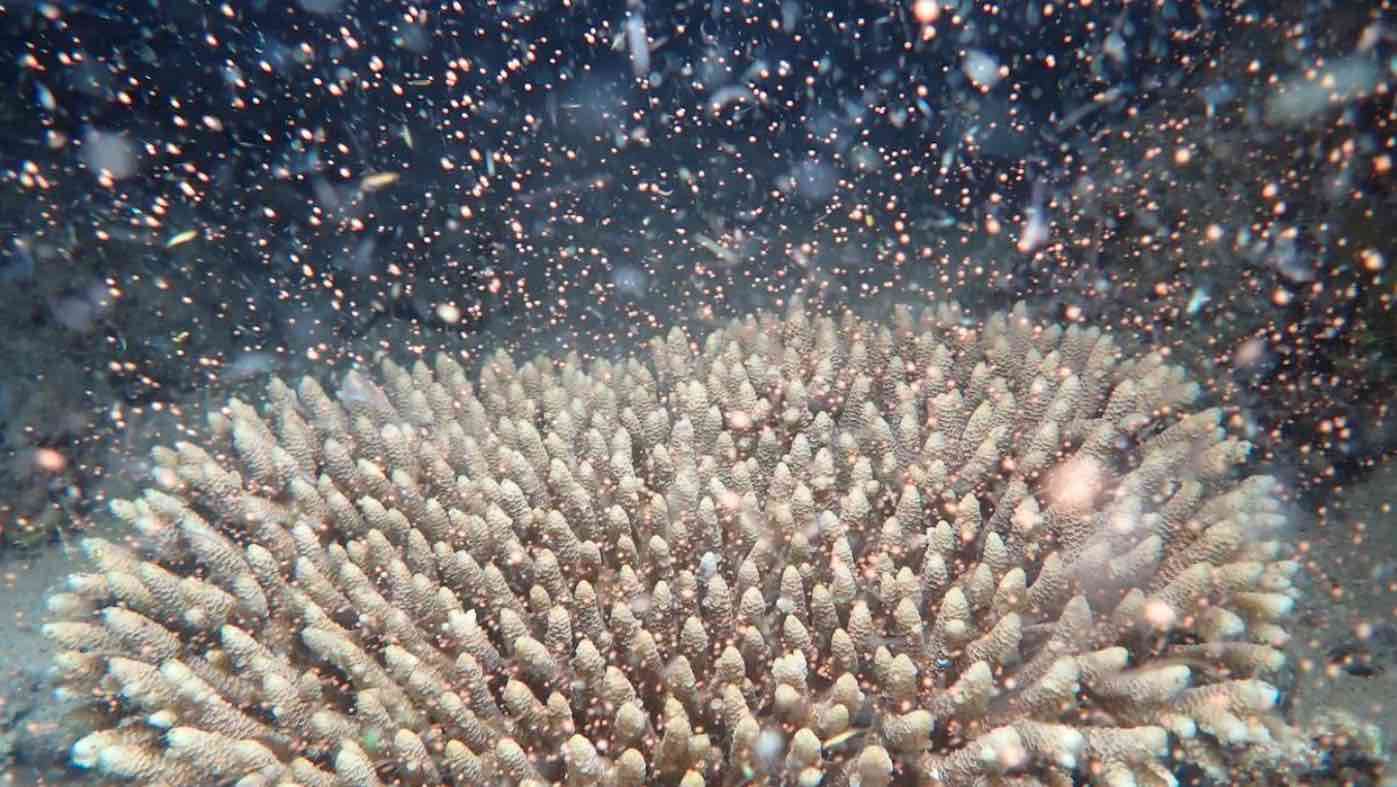Climate-Resilient Coral Offers Hope to World's Reefs, Able to Cope With 2ºC of Global Warming
The experiment was the longest ever done in coral resilience, and showed that adaptation could offer yet-unknown solutions to climate risks.

Oceanographers enjoyed a burst of color and life flowing forth in the annual spawning of coral from the Great Barrier Reef last week.
Taking place after the November full moon, researchers witnessed a banner year that inspired hope for the revitalization of the world's coral reefs.
At the iconic reef off the coast of Cairns, Queensland, different corals synchronized the release of their sperm and eggs, which look almost like the shaking of a giant snow globe.
The coral offspring floated in waves of vivid pink, purple, or blue, depending on the species-and this year it was uniquely impressive.
"Unbelievably beautiful spawning from last night! The party sure has started and the corals are going off," Reef Teach exclaimed on Twitter, posting a video (see below).
Billions of new coral babies born are good news for the reef, after a difficult few years.
"It is gratifying to see the reef give birth. It's a strong demonstration that its ecological functions are intact," Reef Teach marine scientist Gareth Phillips told EcoWatch.
Phillips has spent the past 10 years watching coral spawning.
"The conditions were magical with the water like glass and beautiful light coming from the moon," he said.
CHECK OUT: Breathtaking Photos of Poppy Field's First Bloom in Years
He was very reassured when he saw a lot of spawning, "it is a sign that there is recovery underway, that the system is working."
A post shared by Reef Teach Cairns Australia (@reefteach)
MULTIPLY The Good By Sharing This Hopeful News on Social Media…
Be the first to comment